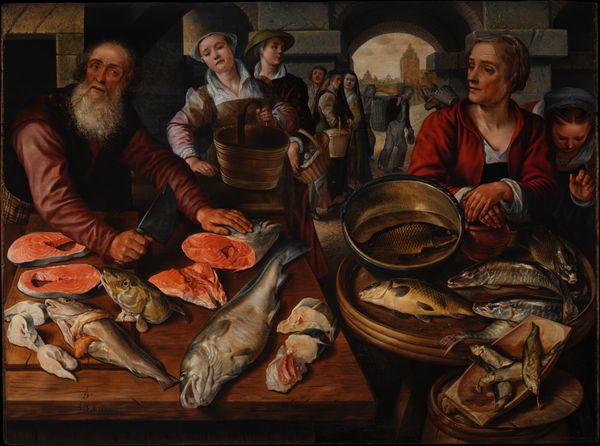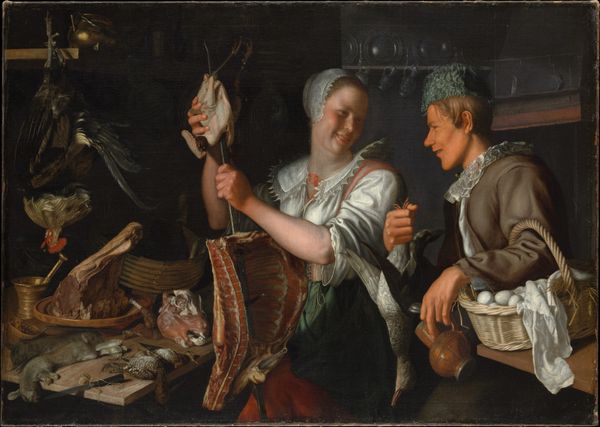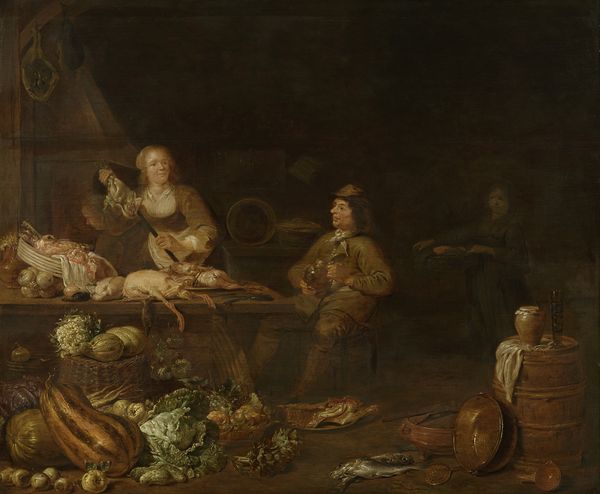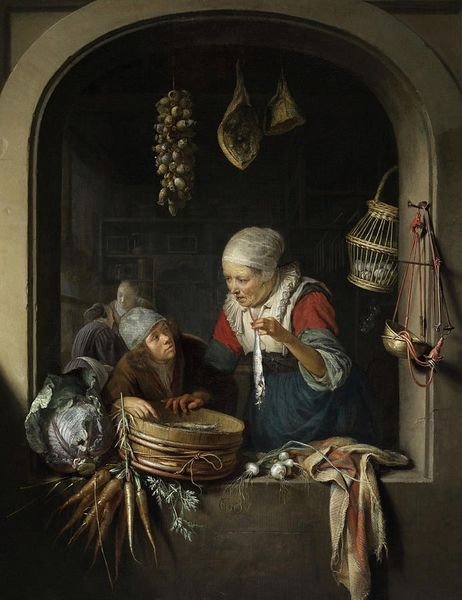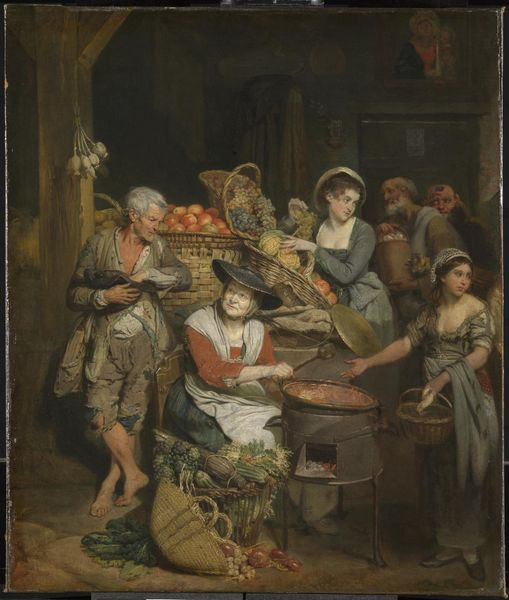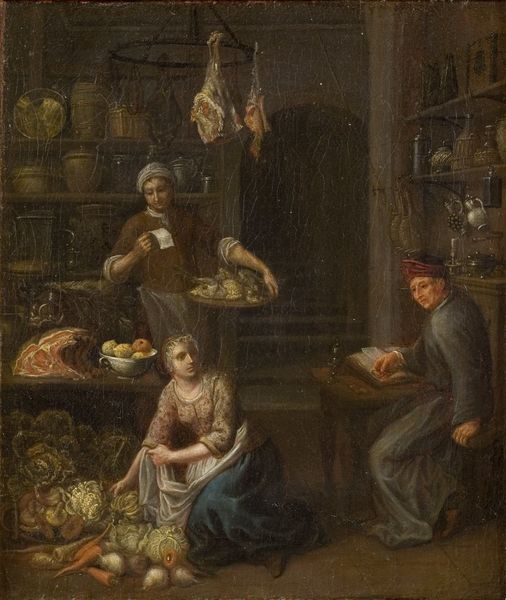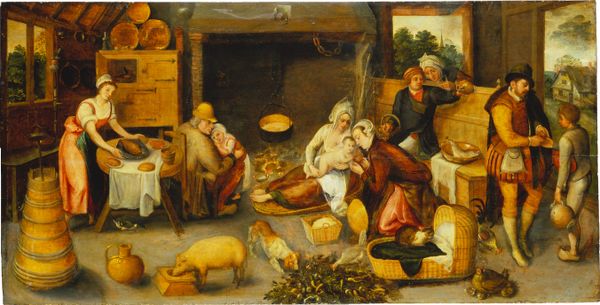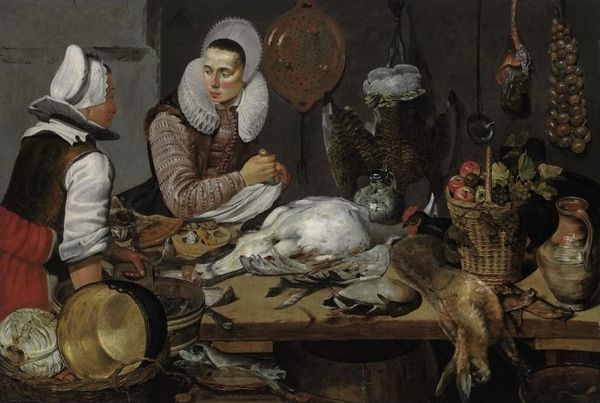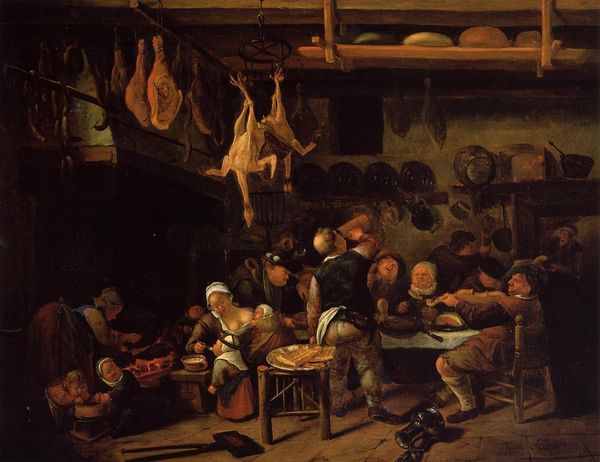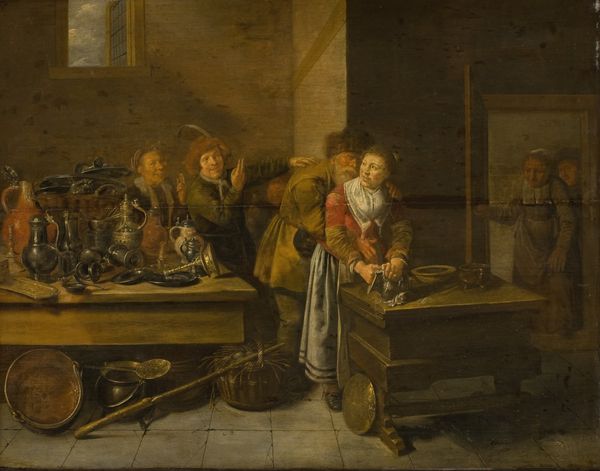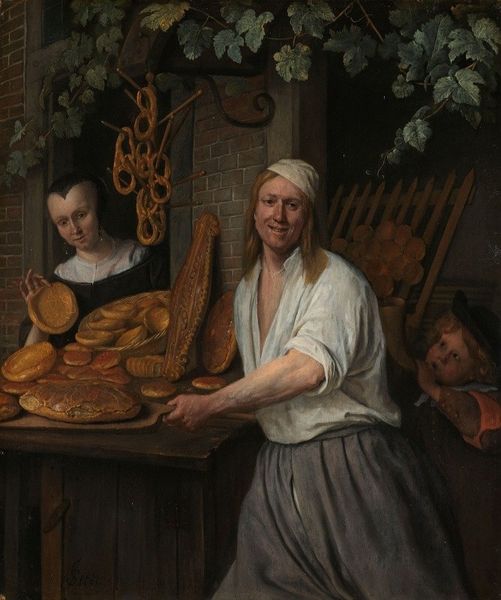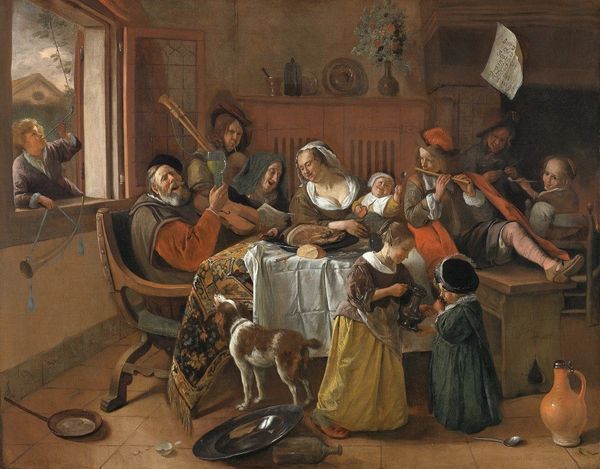
Kitchen Scene with the Parable of the Rich Man and Poor Lazarus 1610 - 1620
0:00
0:00
painting, oil-paint
#
baroque
#
painting
#
oil-paint
#
landscape
#
figuration
#
oil painting
#
genre-painting
#
history-painting
#
realism
Dimensions: height 198 cm, width 272 cm, depth 7 cm
Copyright: Rijks Museum: Open Domain
Editor: This is "Kitchen Scene with the Parable of the Rich Man and Poor Lazarus" by Pieter Cornelisz. van Rijck, made sometime between 1610 and 1620. It's an oil painting, and what strikes me is the stark contrast between the abundance in the foreground and the scene unfolding in the back. What story is this painting trying to tell? Curator: That contrast is exactly where the painting’s social critique begins. Notice how van Rijck places the viewer within a bustling kitchen, overwhelmed by raw meat, fowl, and fish, reflecting Dutch prosperity at the time. Now, consider the background. What do you observe there? Editor: There's a table, some figures that look like diners. Is that the rich man feasting? Curator: Precisely. The artist juxtaposes this everyday scene of Dutch prosperity with the biblical parable. Lazarus, in the biblical story, is not present in the scene, yet that deliberate omission amplifies the painting’s critical social commentary, urging reflection on poverty and wealth. Note the positioning of the kitchen staff - how does that impact the viewer? Editor: The staff are preoccupied, they do not seem to have any compassion or even awareness. Almost as if the artist uses this setting to criticize not just individual wealth but also a societal indifference to poverty. Curator: Absolutely. Consider that this painting emerges during the Dutch Golden Age, a time of immense economic growth and increasing social stratification. Van Rijck seems to be using the painting as a moral mirror, pushing the wealthy merchant class to reflect on their societal responsibilities. The open display of commodities serves not only as a celebration but also a condemnation. Editor: So, the 'genre painting' elements are not simply descriptive, but actually contribute to the narrative about social justice. Thank you, I didn't consider that these everyday settings could serve this political role! Curator: Precisely. Art often participates in public discourse more than we might immediately assume, revealing the complicated dialogue between social ideals, everyday lives, and historical narratives.
Comments
No comments
Be the first to comment and join the conversation on the ultimate creative platform.
